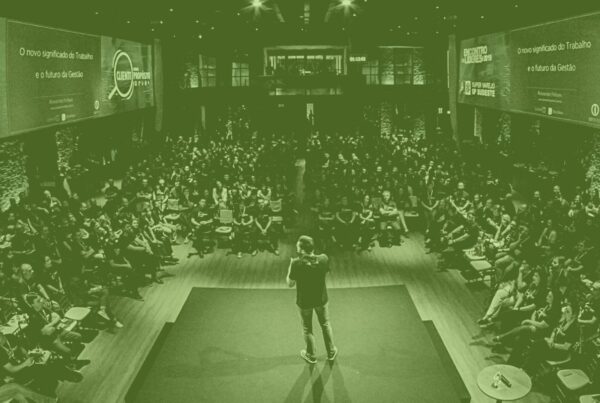So, you want to plan an event. If your head is spinning, don’t worry: it’s all completely normal. Take the event planning process one step at a time. How about you start with creating an event timeline? Event timelines help you stay on track and get you excited about the event you’re going to throw together.
You might be thinking: ‘But how can I know what state will the events industry be in a month or six months from now? What if we all have to pivot to virtual again?’ As long as you have trusted partners on your side, you have nothing to be afraid of. Event timelines should support you, not weigh you down. Don’t regard them as a ruthless time dictator, but as your best friend. And if you’re still really worried about the possibility of your event being canceled, consider planning a hybrid event. That way, you always have that virtual component to fall back on!
But we’re getting ahead of ourselves. In this event timeline guide, you’ll learn how far in advance you should plan your event and what you should focus on at the 6-month, 3-month, and 1-month mark.
Why You Need An Event Timeline
Before we go into the nitty-gritty of event timelines, let’s revisit the most fundamental question: why do you need an event timeline in the first place? To event planners, the answer should be a no-brainer: event timelines keep your event and the event planning process on track.
Events are never a one-person job. That’s why the event timeline serves as a guiding document that sets expectations and deadlines for each individual member of the event staff. Without a timeline that helps visualize the end goal, the planning process can easily derail. You and your team can end up feeling lost and aimless, and your event is going to suffer for it. Include measurables in the timeline – that way, you can stay motivated and focused.
Having an event timeline also allows you to prioritize when planning. A quick glance at your timeline will let you know what needs to be done now and what may not need to be done until later. Knowing what is a priority will help you manage your time better and keep you from feeling overwhelmed. Be sure to always include measurables and deadlines into your timeline to track your progress.
 How Far Out Should You Create Your Event Timeline?
How Far Out Should You Create Your Event Timeline?
Event timelines won’t be of much help unless there’s sufficient time left until the event itself. So, how far out should you create your event timeline? As our Event Tech Podcast host, Brandt Krueger likes to say about nearly everything in the events industry: it depends.
What type of an event is it? A company event, a festival, a conference? Big events with a high number of attendees might require up to a year to plan. Booking major venues and event entertainment is something that should be done as soon as possible. However, if you’re planning a corporate meeting, six months might be all you need.
What about virtual event timelines? We recommend planning your virtual event at least 12 weeks out – especially if you don’t have production partners you can lean on who know what your vision is all about and can jump right into the planning process.
However, if you’re reading this and just realizing you don’t have enough time to put together an event, don’t throw in the towel just yet. As Kara Gladish from Socio pointed out in a recent #EventIcons episode, time is a luxury. “It’s possible to build an event on a very quick timeline, but of course, the more time you have, the more you can go beyond the basics,” she said.
What To Include In Your Event Timeline?
Now that you know how far in advance you have to come up with an event timeline, it’s time to look at the timeline’s content. Start off with the building blocks, those elements that you cannot afford to move around and are an integral part of the event itself. And whatever you do, always make sure to include enough wiggle room to allow for mistakes and unpredictable circumstances (looking at you, global pandemic …).
In case you’re not sure what those building blocks are, we got you covered. Here’s what your event timeline should include, month by month.
Six (And More) Months Out
Set your goals. You should plan your event with goals and objectives in mind, or as we like to say at Endless Events, think about your ‘why’. Use the following questions to get your planning juices flowing:
- What will your event look like?
- How many people will be in attendance?
- What is the reason you are creating this event and what do you want to accomplish?
Based on the answers to those questions, you can start by deciding whether your event will be in-person, hybrid, or virtual. When you know what you are aiming for, you can make objectives and measurable goals for everyone on your team to achieve. By knowing the target, you will be able to create a detailed timeline resulting in a smooth planning experience.
Designate roles and responsibilities. Make sure everyone on your project knows their roles and responsibilities when you’re putting together the event timeline. That way, everyone on the team will know what deadlines they are expected to hit. Include all planning meetings into your event timeline so everyone can add them to their calendar and prepare in advance.
Create your event budget. In order to successfully plan your event, you need to know your event budget. Otherwise, you risk spending more than you anticipated or changing the design of the event later on. Your budget can help you decide where to splurge and where you may need to cut back when creating your event. If you need help with your event budget, download our free event budget template.
Select your venue, virtual platform, and major vendors. After your set your goals and know your event’s vision, your venue should be one of your first selections to secure your event dates. The same goes for virtual platforms: find one that best supports your goals.
Other important vendors that need to be booked well ahead of your event include your AV team, entertainment, and speakers. Consider booking your AV team prior to your venue. They will be able to help you ensure that the venue is capable of producing your vision when it comes to structure and power. They can also help you remove unnecessary AV fees and venue restrictions.
Begin event promotion and create marketing strategies. Promotion and marketing are a crucial part of having a successful event. How else will anyone know your event exists? Start by thinking of your target audience. Where do they hang out? Should you create a Facebook page for your event? Do you want to promote your event through social media influencers and Instagram stories? Perhaps you should create an event website! The better you know your audience the easier it will be to choose your marketing channels.
Three Months Out
Book caterers, florists, and any remaining vendors. Give yourself ample time searching for vendors that fit your event goals. Finalize your vendors at least 3 months out. If you wait too long to book your vendors, your favorite ones will likely have already taken other jobs.
Gather speaker biographies and confirm details. Be sure to give your speakers the rundown on what they need to know for their presentations. Confirm topics with your speakers and request to get speaker biographies, headshots, and whatever else you may need for your programs, marketing, and signage.
Check and order necessary supplies. Now is the time to order all badge holders, swag, and signage for your event. Ordering later can result in massive rush fees and break your budget.
Create emergency & crisis communication plans. Especially in today’s world, emergency plans are a MUST for events. You need to have an emergency plan in place to protect your attendees at your event should disaster ever strike.
Open registration. Attendees should access registration forms easily, so make sure to make them pop. Keep the registration process user-friendly and simple and consider offering early bird tickets to avoid too many last-minute registrations.
One Month Out
Confirm catering order. Call your caterer and confirm everything on the menu is correct. Make sure you have the right amount of food for the number of people attending by giving the caterer a final headcount.
Confirm setup with AV team, florist, and media production. If you haven’t discussed these items already, now is the time to check in with each vendor and make sure you know when they plan to set up. If you want to set up the event a day in advance, keep in mind that it might not always be possible. Check with your venue: perhaps the venue is booked the day before. Additionally, a venue may charge an early setup fee.
Confirm safety & security’s role. Go over your emergency plan with everyone on your team. Make sure everyone on staff is aware of all exits in case a quick evacuation becomes a reality. Make sure you have a COVID compliance strategy in place to ensure your event is safe for all the attendees.
Set up an on-site run-through (if needed). Test, test, test! Sometimes a run-through is unnecessary or not possible. If you do have a run-through, make sure all key players are in attendance. That way, you’ll know the entire team is on the same page.
Keep your attendees informed. Share the event schedule with your guests and give them any instructions they might need to access your event – especially if they’re tuning in virtually.
 Create The “Day-Of” Timeline: It’s Showtime
Create The “Day-Of” Timeline: It’s Showtime
Once your event starts, it’s full steam ahead. Stay organized and in control by creating the so-called “day-of” timeline. Share it with your team and get their feedback before moving forward. Here are some things it should include:
- Setup time – Make sure every person involved in your event setup knows when they are expected to arrive and what they are expected to do.
- Event start time – Have a clear time your event starts, so you know when to anticipate guest arrivals.
- Speakers – Make sure you have not only speakers’ start times, but the estimated length of their presentations in your timeline. Add a bit of buffer time between the presentations to allow smooth transitions and your attendees a moment to stretch their legs.
- Meals – Communicate times with your catering staff. Add any meals, arrival times, and other catering events that will take place.
- Breaks – If you have planned breaks during your event, add them to your timeline.
- Raffles – You want all of your attendees to stick around and be present when giveaways occur, so be sure to add them to your timeline.
- Event end time – Events can’t last forever. Know when your event needs to end. Keep in mind that most venues require cleanup to be done prior to the end of the venue rental. Allow for enough time between guests leaving and the rental being over to clean up to avoid any unwanted fees.
- Breakdown/clean up – After everyone is out it’s time to clean up. Make sure the staff knows what their duties are during the breakdown. Let vendors that will be part know when they are needed to start and complete teardown.
Be as concrete as possible and leave nothing to chance. While your event planning experience might come in handy, remember that every event is unique. Not two event timelines are the same.
After The Event Comes Debriefing
After your event is over, you should first take a deep breath, thank your event staff for their hard work, and pat yourself on the back. You did good. The hardest part is behind you, but the event timeline is not over just yet. After all, events don’t end when the last attendee goes home. Consider adding the following items to your timeline:
- Hold event debrief meeting. Meet with your staff after your event for feedback. Ask what they think went well and what needs to be improved upon for next time. It is best to do this meeting as close to the event as possible so it is fresh in everyone’s minds.
- A complete comparison of actual versus budgeted costs. Now that the event is over, you have all the information you need to compare the actual costs of your event versus the original budget.
- Store all materials and data to assist with planning future events. Store away the feedback and data you have collected. At this time, decide what worked and what needs changing for your next event. And finally, calculate your ROI.
Event Timelines Are Your Best Friend
Event timelines are event planners’ best friends. But remember: one size does not fit all. This is a general guide that should be customized for your particular event. After all, each event is a sum of countless variables that together create the final equation. May your event’s goals and objectives serve as your primary inspiration when you make your event timeline. And remember, the more information you include, the better.
What’s just as important as having an event timeline is partnering up with event professionals who will help you carry the event out. We, the Einsteins of Events, are all about creating that perfect event equation – be it virtual, hybrid, or in-person. So, feel free to talk to us. We’re here to help.
Editor’s Note: This article was originally published in October 2017 and completely revamped in September 2021.











